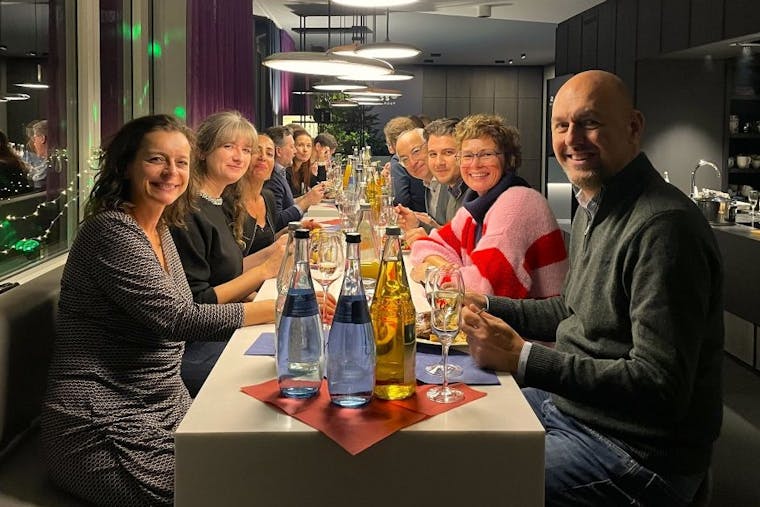Influencer in der Baubranche
Influencer Marketing ist bei B2C-Marken aus dem Werkzeugkasten nicht mehr wegzudenken. Im B2B-Bereich tun sich Unternehmen jedoch oftmals noch schwer, auf dem Gebiet zu agieren. Und verpassen dabei eine große Chance. Denn B2B-Entscheider denken meist langfristig und legen bei ihren Kaufentscheidungen viel Wert auf Empfehlungen. Und genau diese können Influencer bieten – authentisch und glaubwürdig. Auch in der Baubranche haben sich Influencer in den letzten Jahren als Alternative für die Kommunikation an Architekten, Fachplaner oder Handwerker positioniert. Sie konkurrieren hier mit traditionellen Fachmagazinen und etablierten Online-Plattformen. Heute tauschen wir uns mit Eric Sturm, Blogger und Influencer, über „Dos and Don'ts“ in der Arbeit mit Bau-Influencern – auch „Baufluencer“ genannt – aus.

Baufluencer als Kommunikationspartner
Beim Influencer Marketing nutzen Marken den Einfluss (engl. influence) eines Menschen auf eine bestimmte Zielgruppe. In der Baubranche nutzen die sogenannten Baufluencer dafür sämtliche verfügbaren Social Media Plattformen wie Instagram, LinkedIn oder YouTube und auch ihre eigenen Blogs.
Meist sind sie Experten auf Ihrem Gebiet, wie der „Gipser Felix“ oder „that_flooring girl Silja Kinast“. Dabei sind ihre Reichweiten nicht vergleichbar mit B2C-Influencern. Aber wenn unter ihren Followern oder Fans die richtigen Entscheidungsträger sind, ist man als Unternehmen oder Marke bei ihnen bestens aufgehoben. Influencer können auch Nischen-Zielgruppen erreichen, die man sonst nur schwer ansprechen kann. Die Möglichkeiten für Influencer Marketing im B2B-Bereich sind dabei vielfältig: Von einmaligem Sponsoring eines Posts bis zu einer regelmäßigen Blogserie ist vieles möglich.
Wie arbeite ich mit Influencern zusammen?
Das Zauberwort bei Influencer-Kampagnen lautet Kooperation. Anders als traditionelle Medien, werden Influencer beispielsweise in den aller seltensten Fällen einen Text genauso übernehmen, wie ihn das Unternehmen oder die briefende Agentur zur Verfügung stellt.
Denn die Influencer möchten auf keinen Fall Authentizität gegenüber ihren Followern verlieren. Der Auftraggeber hat darum eine eher unterstützende Funktion: Das Produkt zur Verfügung stellen, Informationen liefern, Content empfehlen und immer erreichbar sein gehört zum 1x1 des Influencer Marketings. Den eigentlichen Content kreiert aber in den meisten Fällen der Influencer selbst. Und das unterscheidet ihn auch vom klassischen Testimonial: Der Influencer präsentiert ein Produkt oder eine Story deshalb, weil es sich in sein thematisches Umfeld einfügt. Dafür bringt er seine eigene Reichweite mit und übernimmt die Produktion selbst.

Baufluencer Eric Sturm (Foto: Christine Fiedler, Berlin)
Baufluencer vs. Baufachpresse – vergleichbar, besser, anders?
Wir haben uns über Influencer am Bau mit Eric Sturm unterhalten. Er ist Blogger und „Baufluencer“ aus Berlin mit dem Schwerpunkt Bauen und Architektur.
Auf seinen Blogs Internet-fuer-Architekten.de oder architekturmeldungen.de/blog berichtet er regelmäßig über Architektur und Architekten. Auch wir, die Ruess Group und eine der führenden Agenturen für die Bauindustrie und Bau-Marketing, arbeiten mit ihm zusammen. Für unseren Kunden ALHO hat Eric Sturm das Werk und eine Baustelle des Modulbau-Spezialisten besucht und darüber auf seinem Blog und seinen Social-Media-Kanälen berichtet. Entstanden ist ein schöner, authentischer Blog-Post mit einer guten Resonanz in der Zielgruppe Architekten.
Influencer Marketing
Eric, was unterscheidet die Aktivitäten von Baufluencern von Fachmagazinen und Fach-Online-Portalen?
Der persönliche Stil, das Medium, aber auch die möglichen Formate. Bei einem Baufluencer prägt der individuelle Stil das jeweilige Medium – viel stärker als bei einer klassischen Fachpublikation. In meinem Fall sind das Blog, Twitter- und Instagram-Profil. Daher sollte der Influencer und sein Stil passend zur Marke ausgewählt werden. In den Formaten sind Baufluencer vermutlich deutlich weniger eingeschränkt als klassische Medienmarken. Wie sieht die Zusammenarbeit aus, also Umfang, Frequenz, Intensität im Sinne von wie stark tritt eine Marke in Erscheinung – diese Punkte sind mit Influencern frei verhandelbar.
Welche Vorteile hat der Auftraggeber bei einer Kooperation mit einem Baufluencer?
Der Auftraggeber profitiert vom Netzwerk und der Reputation des Baufluencers. Anders als bei einem Fachmedium, das eher anonym als (Medien-)Marke in Erscheinung tritt, ist der Baufluencer eine individuelle Person. Mit Stärken und Schwächen, Vorlieben und Abneigungen.
Wenn diese Person zum Beispiel über ein Produkt berichtet oder über eine Veranstaltung, bei der das Produkt eine Rolle spielt, kann das Produkt indirekt von der „Strahlkraft“ des Baufluencers profitieren. Aber beides muss natürlich zusammenpassen – vom Stil her, und es sollte eine gewisse Begeisterung oder zumindest Sympathie für das Produkt oder den Hersteller seitens des Baufluencers vorhanden sein. Wenn das nicht der Fall ist, sollte man es lieber sein lassen. Dann wäre ein Advertorial oder eine Anzeige in einer Fachpublikation vermutlich besser.
Auf welche Kennwerte/KPIs sollte der Auftraggeber achten, wenn er Baufluencer beauftragt?
Ich persönlich bin kein Fan von der Quantifizierung aller möglichen Dinge. Kennzahlen wie erzielte Reichweite sind gut und schön, aber ich finde, damit sollte man es auch nicht übertreiben. Wichtiger wäre mir als Auftraggeber, in welchem Umfeld sich ein Baufluencer bewegt, von wem er gelesen bzw. wahrgenommen wird. Glücklicherweise sind die digitalen Medien relativ transparent: Ich kann ja bei jedem Twitter-, Facebook- oder Instagram-Profil prüfen, wer oder woher die Follower und Abonnenten sind.
Welche Rolle spielt für Dich eine vermittelnde Agentur wie die Ruess Group?
Eine gute Agentur ist aus meiner Sicht sehr wichtig, weil sie den Kunden neutral beraten kann, welcher Baufluencer, welche Kanäle und welche Formate zu seiner Marke passen. Das ist ähnlich wie bei der klassischen PR-Arbeit oder bei der Media-Planung. Vielleicht ist es sogar noch wichtiger als dort: Denn im Influencer-Marketing spielt die Brand Safety, also die Platzierung der eigenen Marke in passenden, „sicheren“ Umfeldern, eine wichtige Rolle. Eine gute Beratung ist extrem hilfreich, die optimalen Kombinationen – oder besser Partnerschaften – zwischen Marke und Baufluencer zu finden.
Lust auf eine Baufluencer-Kampagne?
Eine weitere erfolgreiche Baufluencer-Zusammenarbeit realisierten wir für den Büromöbelhersteller Interstuhl gemeinsam mit Hendrik Bohle von THE LINK.
Falls Sie nun auch über eine Kooperation mit Baufluencern nachdenken, stehen wir Ihnen gerne beratend zur Seite!
- Wir finden für Ihre Kampagne die passenden Influencer
- Wir erstellen ein detailliertes Briefing mit klar formulierten Zielen und Erwartungshaltungen
- Wir kümmern uns um die Vertragsabwicklung mit den Influencern und die Betreuung
- Wir kontrollieren und analysieren die definierten Ziele und Kennzahlen
Kontakt







